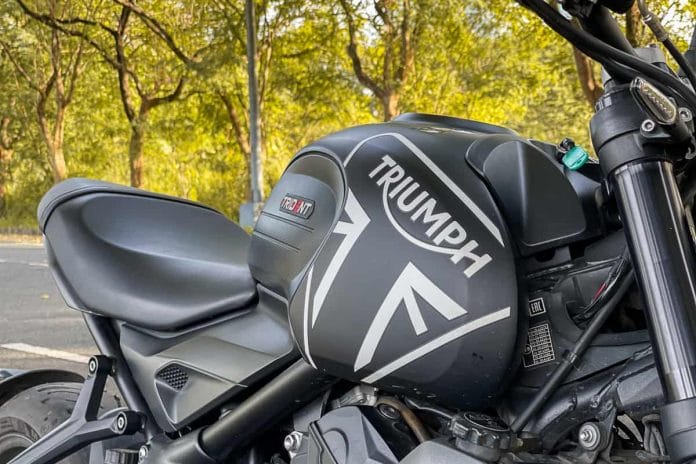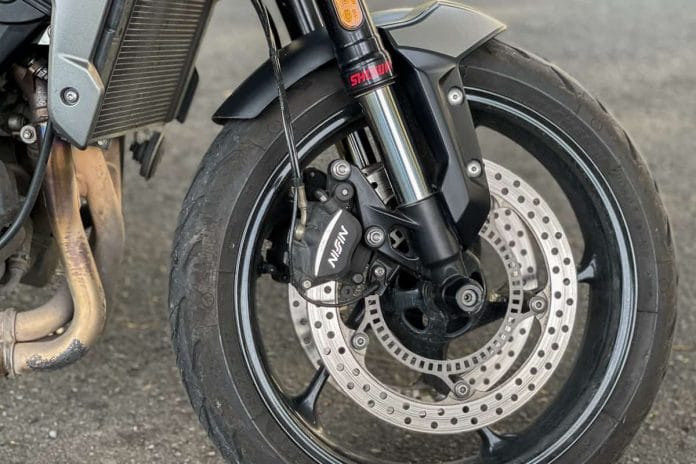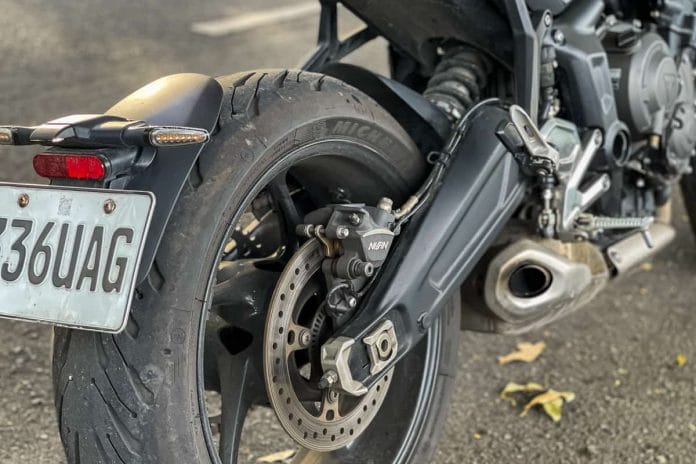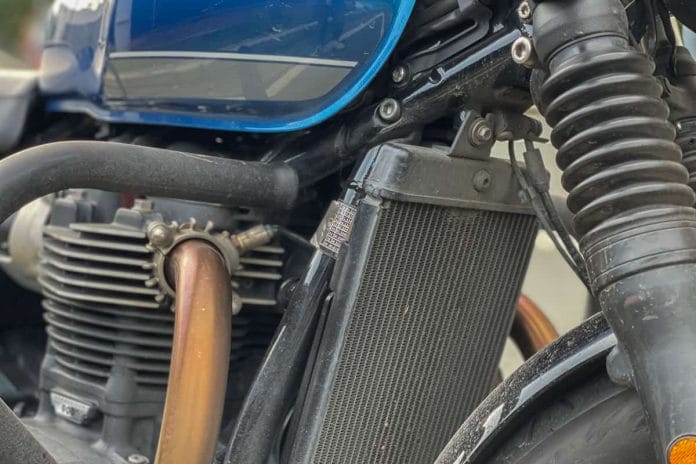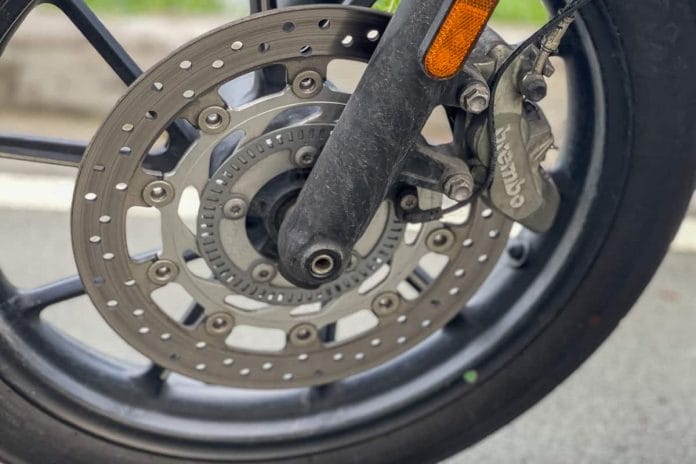Just how important is heritage? For cars, heritage is something that’s a bit murky or diluted these days, especially seeing European brands now completely owned by Chinese conglomerates; some are even being built in China. For motorcycles, the story’s the same.
Thankfully, there are brands that still keep faith with their rich histories. Triumph is one of those brands, with a heritage that goes as far back as 1902. Although it went under a new route in the ‘80s, Triumph motorcycles are practically the same as before.
What I had for testing is part of the new Bonneville series that emerged in the early 2000s. The Triumph Bonneville Street Twin stands as the entry-level model in the range, with a price tag that’s relatively affordable compared to the other Bonnies. If you’re in the market for a standard Triumph bike, this is probably the one you’re initially looking at.
And then there’s the Triumph Trident 660. Introduced recently in the lineup as an entry-level middleweight class contender, the Trident 660 stands as the entry point to the Triumph lifestyle, just like the Bonneville Street Twin.
That said, how different is the Trident 660 and the Bonneville Street Twin from each other? Both naked and supposed to be friendly for beginners, I had both for a back-to-back test, and here’s the rundown.
Style
Design-wise, it’s hard to deny that the Bonneville Street Twin and the Trident 660 are worlds apart. The Street Twin, being a standard Bonnie, fits right into the current retro ethos among bike enthusiasts these days.
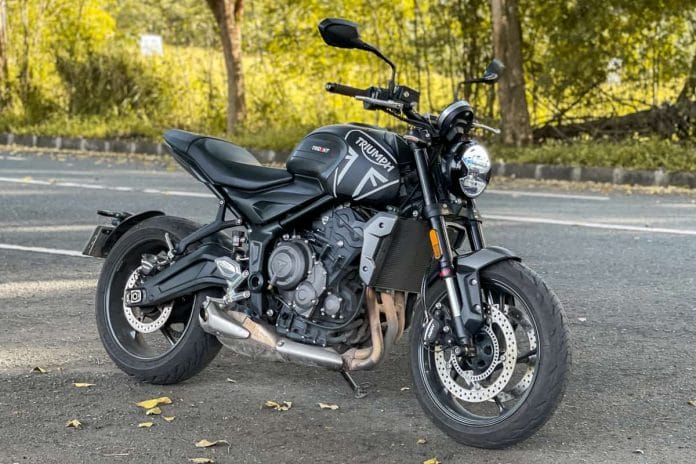
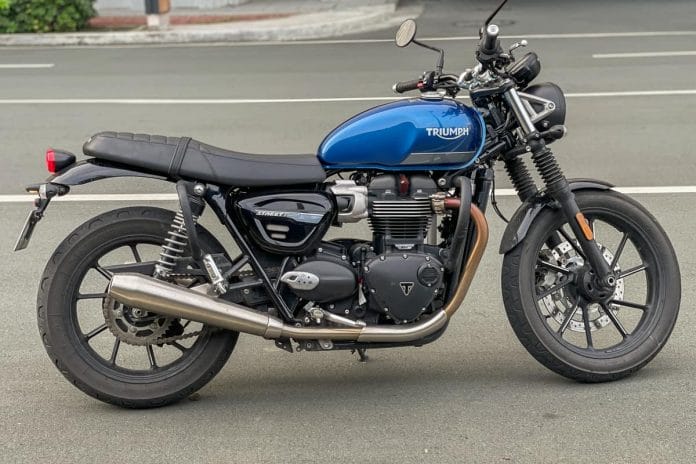
Round halogen headlights, fork gaiters, brushed aluminum details, tank stripes, and round side mirrors – all of these connive for that classic look. Although spoke wheels could have completed the entire theme, the standard 18/17-inch alloy wheels still look the part so no strong complaint here.
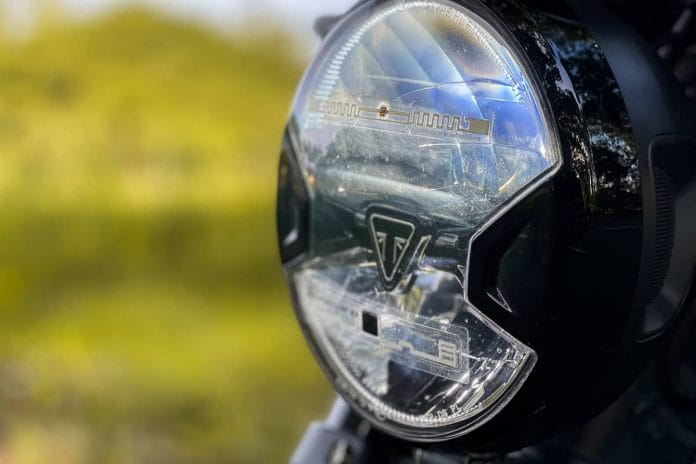
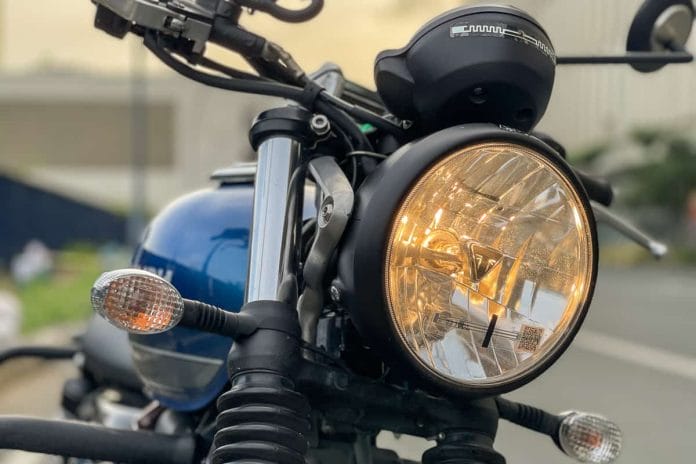
Overall, the Street Twin sure does attract old and new MC buyers into the brand with its design alone – a perfect match to its pricing.
The Trident 660, on the other hand, is quite modern with a tad touch of retro styling. Belonging in the class of neo-retro roadsters, the Trident locks horns with bikes like the Yamaha MT-07, Kawasaki Z650, and the Honda CB650R.


That said, the Trident’s design is more aggressive than the Street Twin. The former looks more compact than the latter, although the Trident evidently stands taller than the classic stance of the Street Twin. I particularly love the neat execution at the rear, while the styling of the 17-inch alloys fit the bike just perfectly.
The decal on the fuel tank varies per color (and price). The black-on-black theme of the tester screams the UK-based branding; for other options, there’s the more affordable (and more sedate) white version and the more extroverted Silver Ice version with Diablo Red accents. Personally, I prefer the third one.
The choice between these two bikes in terms of design boils down to preference, with the Trident definitely winning the hearts of those who want a sportier-looking MC. However, I can’t deny that the Street Twin’s retro-licious approach has a gravitating appeal on its own.
Comfort & ride quality
In terms of riding comfort, the Trident and the Street Twin are day and night against each other. The Trident comes with 41mm Showa upside down separate function forks at the front and a Showa monoshock at the rear with adjustable preload. The Street Twin does come with standard cartridge forks at the front and twin RSUs at the rear, also with preload adjustments.
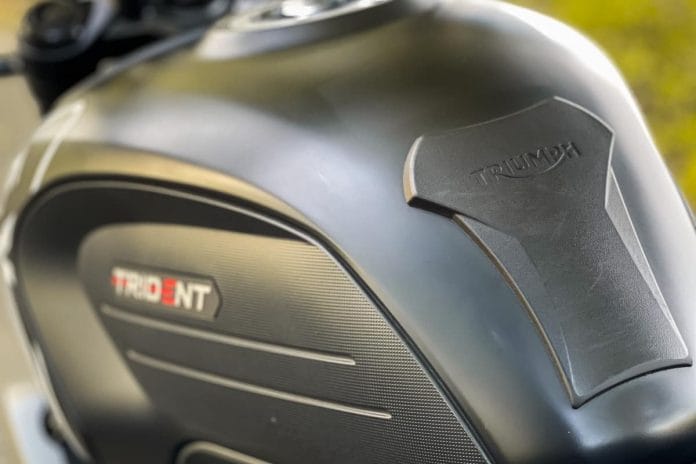
In a real-world setting, the Street Twin felt more forgiving than the Trident, especially on the not-so-ideal streets of Metro Manila. The former absorbs road imperfections better than the Trident – add the fact that some vibrations from the three-pot mill transfer to the handlebar, but not to the point of annoyance.
Moreover, the Trident has a higher seating position than the Street Twin, albeit the latter felt wider in between the legs. I stand at 5’6” (with an in-seam of a 5’5”) and the Trident’s 805mm seat height is enough for me to stand on both feet, albeit weight’s mostly on the ball. On the Street Twin and its 765mm seat height, the position while at a stop was much more natural and relaxed.
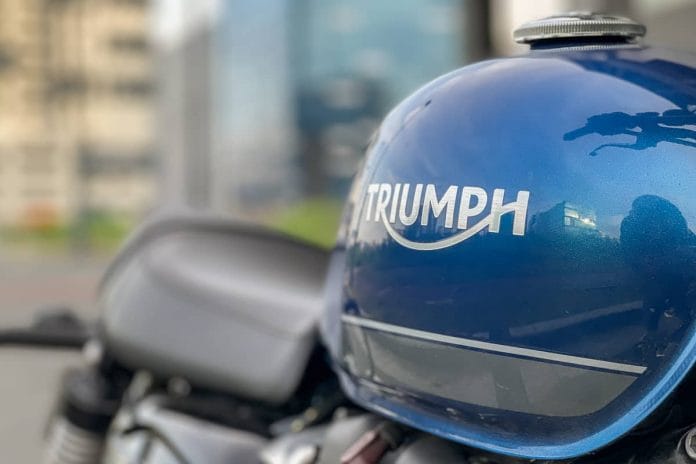
That said, spending considerable time on stop-and-go traffic was much more livable with the Street Twin. The riding position’s almost the same on both, with the Trident warranting a marginally sportier (although still neutral) stance for the one on the saddle. That said, longer rides can be more cumbersome with the Trident, not because of the riding position but with the Street Twin’s softer, wider, and more cushioned seat.
Technology
Both bikes come with ABS but for some reason, the Trident comes with more modern niceties than the Street Twin despite its lower price. The former comes with two ride modes (Road & Rain), while LEDs take care of the front and rear lighting. It also has a quick shifter.
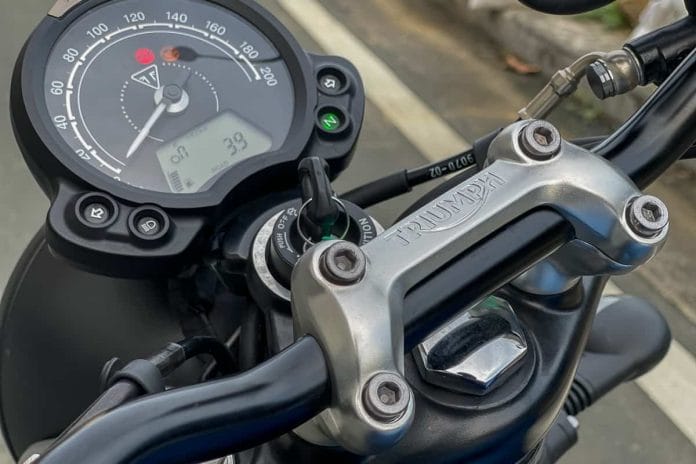
As for the instrument, the Bonneville Street Twin’s classy analog speedometer is clear and easily readable even under brisk sunlight, as is the digital trip meter at the bottom.
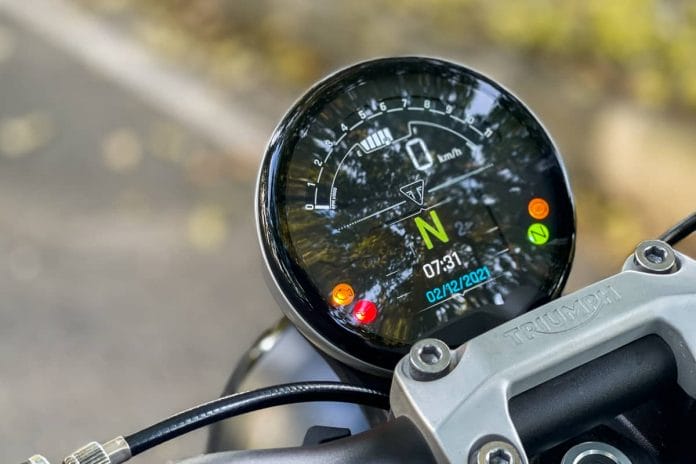
The story’s the same as the Trident’s digital approach on the circular instrument, with switchable views for the trip meter. The color TFT screen below displays gear, odometer, clock, and calendar. It can also be connected to Triumph’s mobile app which employs turn-by-turn navigation functions. Even better, the bike has an immobilizer, traction control, and self-canceling turn signals; the latter’s a cool feature to have at this price point.
On this end, the Trident has a glaring advantage in terms of tech goodies, but I’d be remiss not to mention that the Street Twin has a deep heritage and engine displacement to back up its pricing.
Performance & handling
The Triumph Bonneville Street Twin uses a liquid-cooled SOHC, 270-degree crank angle parallel-twin 900cc engine. That said, it’s heavier at 216 kilograms, although it is torquier at 80Nm that comes in as early as 3,800 rpm. Power output’s at 64hp at 7,500 rpm – all sent to the rear wheels via a 5-speed wet transmission with torque assist.
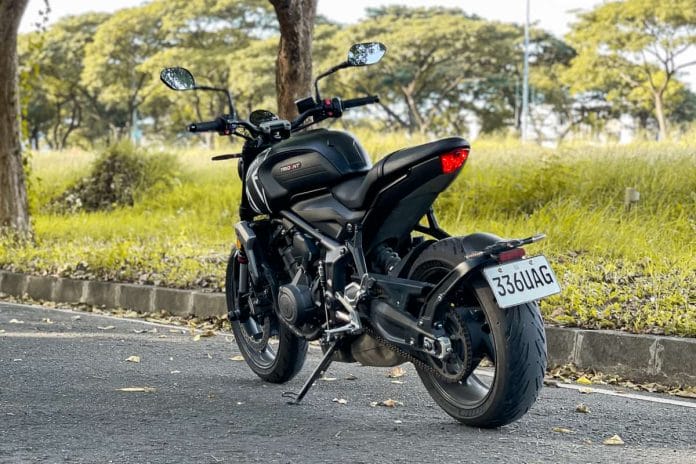
The Triumph Trident draws power from a liquid-cooled, inline-three 660cc DOHC motor, with sequential electronic fuel injection and ride-by-wire throttle control. Power is sent to the rear wheels by chain via a 6-speed wet transmission with slip assist. It makes 80hp at 10,250 rpm and 64Nm of torque at 6,250 rpm, pulling its 189 kilograms of wet weight. Of note, the Trident is the lightest of the Triumph bikes currently in the Philippines.
On real-world testing, the Street Twin felt more alive with its early torque delivery. Both bikes switched gears without a hitch, although the Trident has a tough clutch lever that calls for adjustment. Brembo brakes on the Bonnie, Nissins on the Trident – both bikes halted safely and intently. Though admittedly, the Trident has a stronger rear brake than the heavier Street Twin.
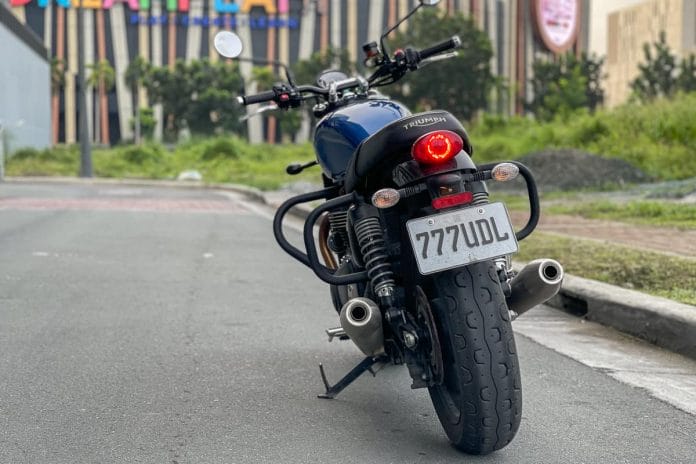
On the highway, the Street Twin felt more planted and unaffected by wind, which made it a comfortable cruiser at speeds. You can attribute this to its mass and low center of gravity. It also climbed to speed limits quicker than the Trident, thanks to the handful of readily available torque.
The lighter Trident, on the other hand, was a bit top-heavy so highway drives required more attention for a more enjoyable cruise. The linear power delivery also required full attention to the throttle to keep it at a hundred. It’s a cinch to maneuver in the city, though, plus power was spread nicely throughout the range, so you’re not constantly looking for another gear. You can easily cruise within the city at third gear.
Speaking of handling, the Street Twin was in its element in the twisties. Its responsiveness and torquey character made for a confident-inspiring ride, almost heavenly through in and outs of each corner. In comparison, the Trident required more intent on turns, but it still stood as an agile machine that could handle a wide margin of errors even while cornering.
Fuel efficiency
On-road characteristics considered, the Street Twin returned an impressive 23.3 km/l on combined riding conditions, meaning both on heavy city traffic and short highway stint. On similar testing routes, the Trident returned 21.3 km/l, which wasn’t bad at all.
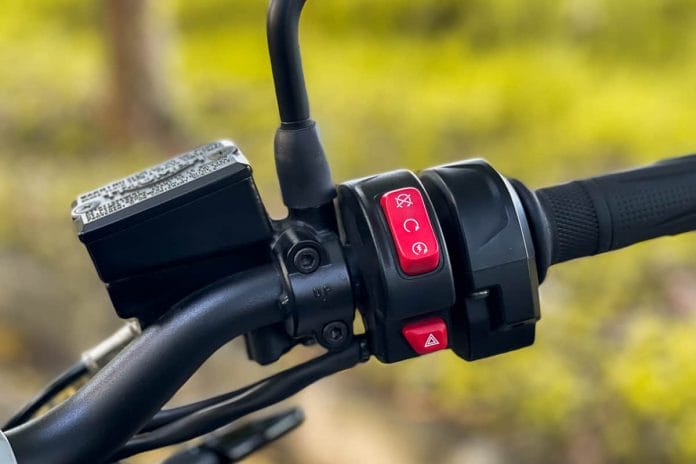

The Trident has a 14L tank that’s a tad bigger than the Street Twin’s 12L – not much of a difference when it comes to trips to gasoline stations. Of note, both bikes don’t require premium fuel, so that’s a plus.
Pricing & verdict
If you’re ready for big bikes and you want a modern, sporty-looking middleweight roadster that isn’t short on features, you can never go wrong with the Triumph Trident. Pricing starts at P506,000, with the tester and my red-splashed choice selling for P512,000. This puts the Trident at a pretty competitive position in its class in terms of pricing. If there’s any nitpick, I would say it could use some exhaust upgrade as it sounded too polite.
Add a bit more to that and you’d be in the range of the Bonneville Street Twin. The entry-level Bonnie starts at P685,000 for the Jet Black variant; the tester’s Cobalt Blue and the Matt Ironstone are both priced at P695,000. If you want a more relaxed cruising bike with a more satisfying pull with every twist of the throttle, the Street Twin’s for you. Plus, add the fact that it’s a good-looking bike with a lot of heritage flowing through its veins.
In any case, you’d be riding a Triumph. Heads turning while braving through EDSA and while cruising on the highway is a common occurrence, so there’s that.


